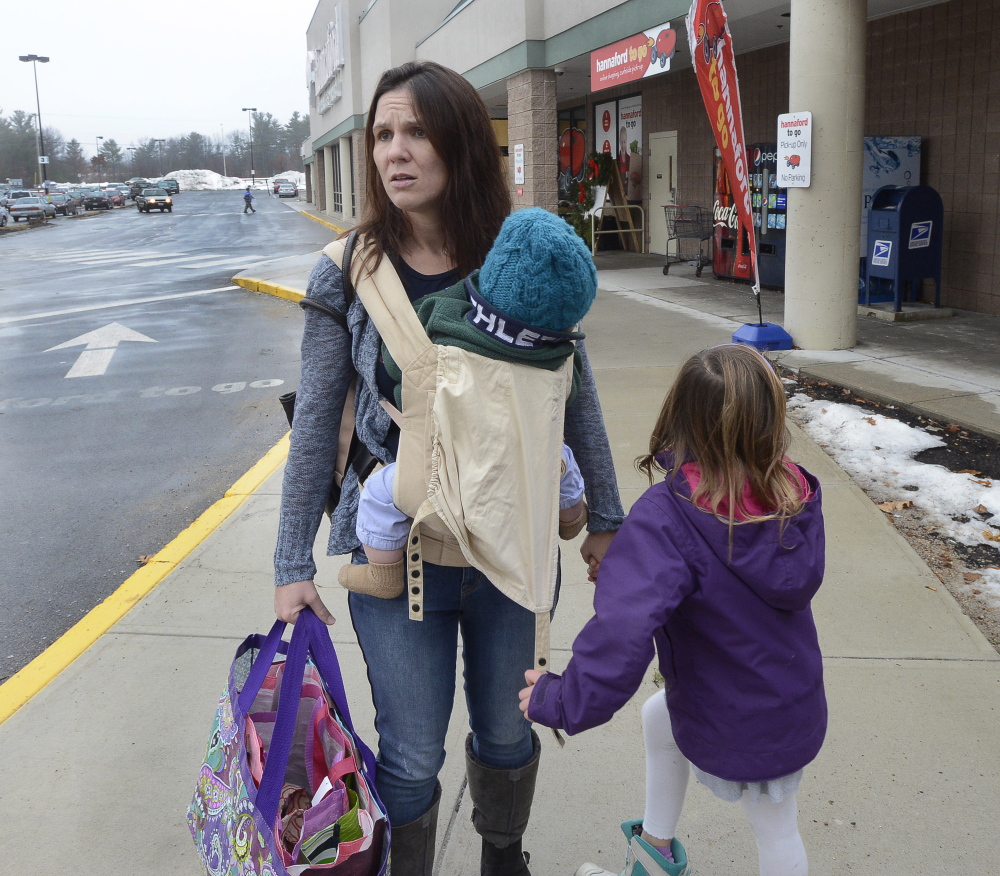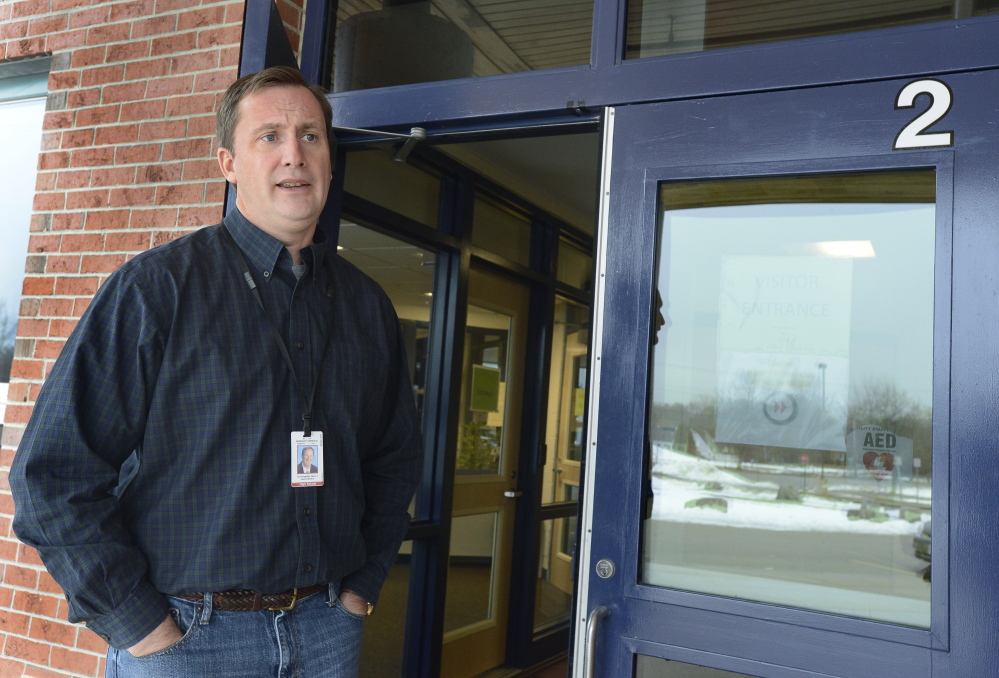WINDHAM — Schools in Windham and Raymond will remain closed for a third day Wednesday as the communities await more details about threatening emails received by two school district officials Monday morning.
Police and Regional School Unit 14 released no new information about the nature of the threats and said they needed more time to investigate before students can return to school.
While a national school-safety specialist said Tuesday that schools must err on the side of caution, the unusual response and lack of details about the threats caused concern in the two-town district.
Kate Delewski, the mother of two Windham Primary School students, said she didn’t plan to let her 5- and 6-year-old daughters return to school without getting more information about the threats.
“I don’t feel comfortable sending my kids back until they tell us why they were out in the first place,” said Delewski, who had to take Tuesday off from work to care for her children.
The emails, which were sent to RSU 14 Superintendent Sandy Prince and Windham Middle School Principal Charlie Haddock, didn’t target a specific building within the district. The messages were not identical and were sent from different sources, police said. But Prince said the email he received was “alarming.”
A group of high school seniors shopping Tuesday at Marshalls in North Windham on their day off said there’s been speculation about the threats, but no indication of who sent them or what they said.
“No one has any ideas,” said Aiyanna Maciel.
The students said they would rather have the ordeal be over than to get another day off from school.
“It would be nice to be safe,” said Emily Algeo.
No students were permitted on school property and all events scheduled on school grounds Tuesday were canceled, including athletic practices and games, adult education classes, concerts and meetings. Prince said more information about scheduled events will be posted Wednesday.
Jackson Giampino, a senior basketball player who was supposed to play in a home game Tuesday afternoon against Sanford, said he wasn’t disappointed that it was postponed because of the threat.
“I think it’s for the better,” he said. “Safety first.”
Inside the locked doors at Windham High School, Principal Chris Howell was catching up on paperwork and preparing for classes to resume – whenever that may be. He and the custodial staff were the only people in the building, he said.
Aside from a police cruiser out front of the high school, which Howell said belonged to the school resource officer, there was no sign of a police presence on the Windham school complex around noon Tuesday.
The superintendent’s office was the only open building in the district. Police and school officials met there Tuesday afternoon before releasing a joint statement announcing that schools would be closed again Wednesday.
“At this time, we have mutually decided that more time is needed to further the investigation,” said the statement from Prince and Windham Police Chief Richard Lewsen.
“Investigative information will remain confidential until the reports are complete,” it said.
Samantha Warren, spokeswoman for the Maine Department of Education, said the state has received reports of five bomb scares in Maine districts so far this year. She said it is not unprecedented for a school to be shut down for multiple days as a result of a threat, although she said she could not immediately provide examples.
Ken Trump, president of the consulting firm National School Safety and Security Services, said a study last year showed that in the first six months of the school year, schools in 43 states experienced 315 threats or acts of violence and 35 percent of the threats were delivered electronically, by email or some form of social media.
“Schools are being bombarded across the country with threats, many of them electronically,” Trump said. That increases the importance of schools working with law enforcement to develop good threat assessment techniques, he said.
Seventeen of the incidents stood out because of the severity of the threat or associated violence, although many of those were preceded by no warning, according to the study.
Trump said the more specific a threat is, typically the more credible it is.
A vague, timeless threat is typically less credible than one for which the perpetrator has done planning, has determined the tools needed and is specific about targets.
Usually, electronic communications carry some kind of footprint that police can track, but sometimes the perpetrators use international proxy servers, or social media programs based out of state, Trump said. That can mean involving federal authorities, prolonging an investigation.
“Those investigations are going to take a lot more time than an investigation of a threat written on the bathroom walls or, in the old days, calling in a threat on a pay phone,” Trump said.
Police Chief Lewsen, while refusing to disclose details of the investigation, said no federal agencies are involved.
Another consequence of threats in the electronic age is how fast misinformation can spread, Trump said.
“While those investigations are ongoing, there’s a great deal of community anxiety and misinformation and rumors, which used to spread in hours and days but now spread in seconds with texting and online communications,” he said.
School officials will want to resume classes as soon as possible, and not just for educational reasons, he said.
“The longer you stay out of school, unless there’s a clear, imminent threat, the greater your risk is going to be you’re going to have more of these down the road,” Trump said.
Once classes resume, it’s normal to have a drop in attendance as nervous parents and students have lingering fears, even though the stepped-up security presence after such an event makes schools safer than at any other time of the year, he said.
Gary Sigrist, a school safety specialist with Ohio-based Safeguard Risk Solutions, said it makes sense to alert the state’s “fusion center” – a federal intelligence task force where sensitive and classified information is shared among state, federal and local law enforcement. That can help determine whether other areas have faced similar threats, he said.
Sigrist, who has received training from the Department of Homeland Security, said officials find a device in only 2 percent to 5 percent of bomb threats, and often it is not a real explosive.
Schools should always consult with law enforcement after receiving a threat, but the ultimate decision about whether to close school is for school officials, he said. He urges districts to err on the side of caution.
The disruption caused by shutting down school for a threat is worse than a snow day, because of the fear, Sigrist said.
“All of a sudden kids are afraid to come to school because all these bomb hoaxes,” he said. “That’s an emotional toll.”
Staff Writer David Hench contributed to this report.
Leslie Bridgers can be contacted at 791-6364 or at:
Twitter: lesliebridgers
Send questions/comments to the editors.







Comments are no longer available on this story